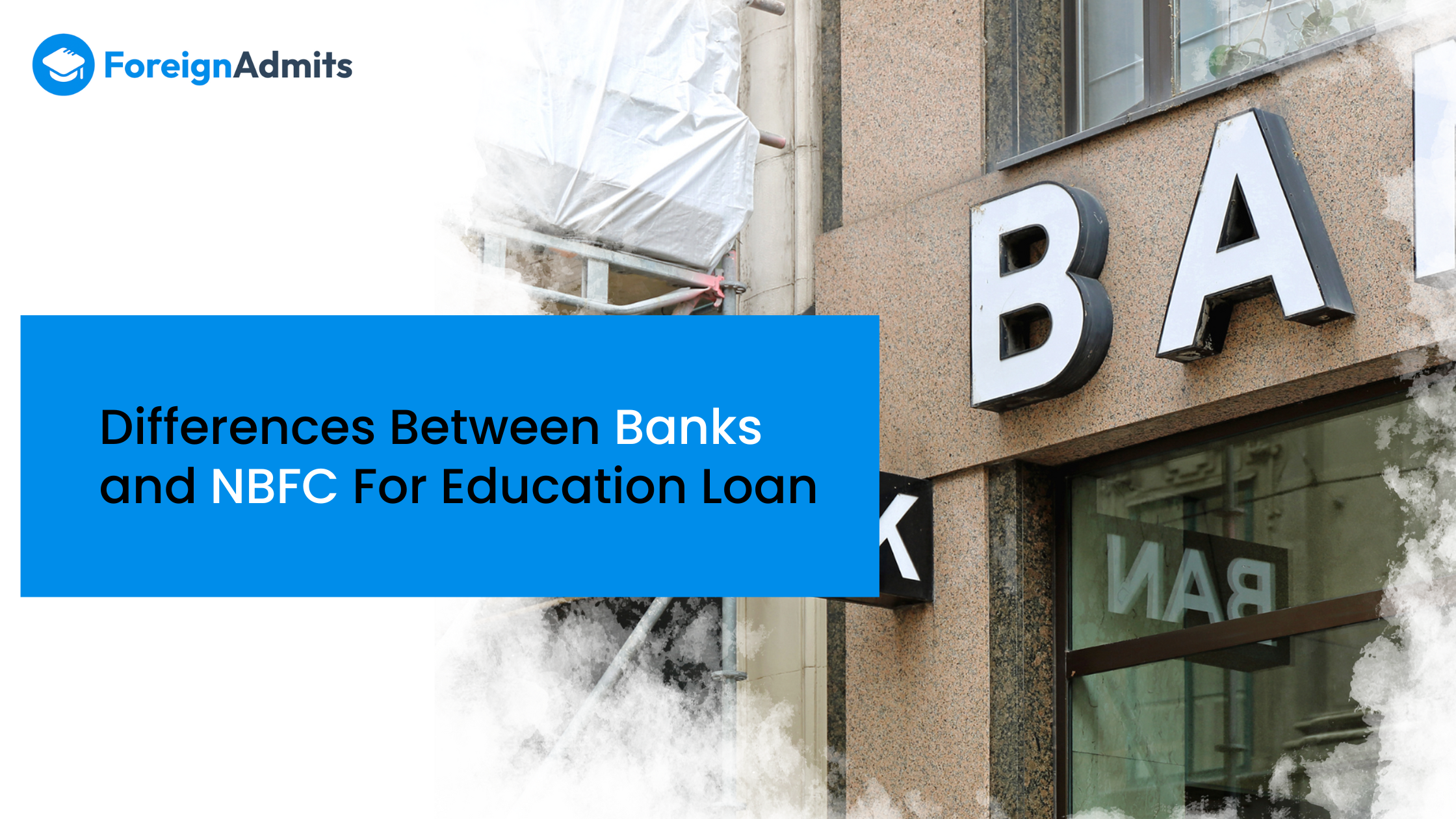Differences Between Banks and NBFC For Education Loan
With so many banks and NBFC for education loan (NBFC) available today, it can be tough to determine which one is the best fit for you when it comes to education loans. In this post, we will describe the fundamental distinctions between banks and NBFCs regarding school loans so that you can make an educated decision. We will also advise you on selecting the best solution, depending on your circumstances.
Differences Between Banks and NBFCs When It Comes to Education Loans
When it comes to education loans, banks and NBFC for education loan differ in a vital aspect. Here are a few examples of significant distinctions:
Course Flexibility
The variation between a bank and NBFC for education loans is that banks often lend education loans to prominent academic organizations in India and internationally. However, regardless of their employment prospects, NBFCs may give education loans for any academic intervention.
Loan Amount
Another essential element to consider when deciding between a bank and an NBFC for education loan is the loan amount. If you take out an educational loan from the bank, you will be given a loan up to a certain amount. in contrast, the NBFC does not set a borrowing limit. The loan will be based on the recipient’s academic achievement and the parents’ wealth or credit history.
Expenses Covered
Banks often provide a margin of 15-20%, covering 80-85% of overall educational expenditures such as tuition, travel, exam, and lodging fees. NBFCs, on the other hand, guarantee 100% of entire educational expenditures, covering travel, exam, and tuition fees, with no margin money.
Fastest Approval
Banks authorize and sanction loans depending on the borrower’s credit record. They rapidly approve and issue loans for reputable courses with excellent employment possibilities. NBFC for education loan, on the other hand, approve and issue loans considerably faster, independent of the college or course type.
Interest Rates
Banks compute interest rates based on the bank’s current standard rate. In the case of offshore loans, it typically ranges between 10.5 to 12% for secured debt and around 10.75 to 14% for unsecured debt. The interest rate for domestic loans is between 9 and 14%. NBFCs, in contrast, provide interest rates ranging from 9% to 12% on both secured plus unsecured loans.
Moratorium Period
Banks’ embargo periods range from six months to one year. In contrast, NBFC for education loan offers a 6-month EMI vacation or moratorium period.
Frequently Asked Questions
1. Is it a smart idea to get an education loan from an NBFC?
If you have strong credit and want to pursue higher education, getting an education loan from an NBFC may be a fantastic choice. This will not only help you advance your job, but it will also provide you with the financial stability to follow your aspirations without concern of being unable to repay your loans.
2. Which NBFC is the most suitable for college loans?
A few NBFCs that might be a good fit for college loans include Kotak Mahindra Bank Ltd., HDFC Bank Ltd., Axis Bank Ltd., and ICICI Prudential Life Insurance Co. Ltd. Each bank has its strengths and weaknesses, so it is important to research each one carefully before making a decision.
3. Which is preferable, an NBFC or a bank?
While both have advantages, an NBFC may be a superior investment if you want something more active and fast-paced. An NBFC often provides better rates than a bank and is more flexible in responding to changing market conditions. Furthermore, because an NBFC’s lending practices are less cautious, they can take on riskier projects that banks might avoid.
Conclusion
When the terms and conditions of education loans accessible from banks and NBFCs are compared, it is evident that these two lenders differ in how they function and fund education for their borrowers. While banks’ lending standards have become more stringent over time, borrowing from NBFCs may still be a simple process. However, if you want quicker approval times, then make sure to head straight to an NBFC!


